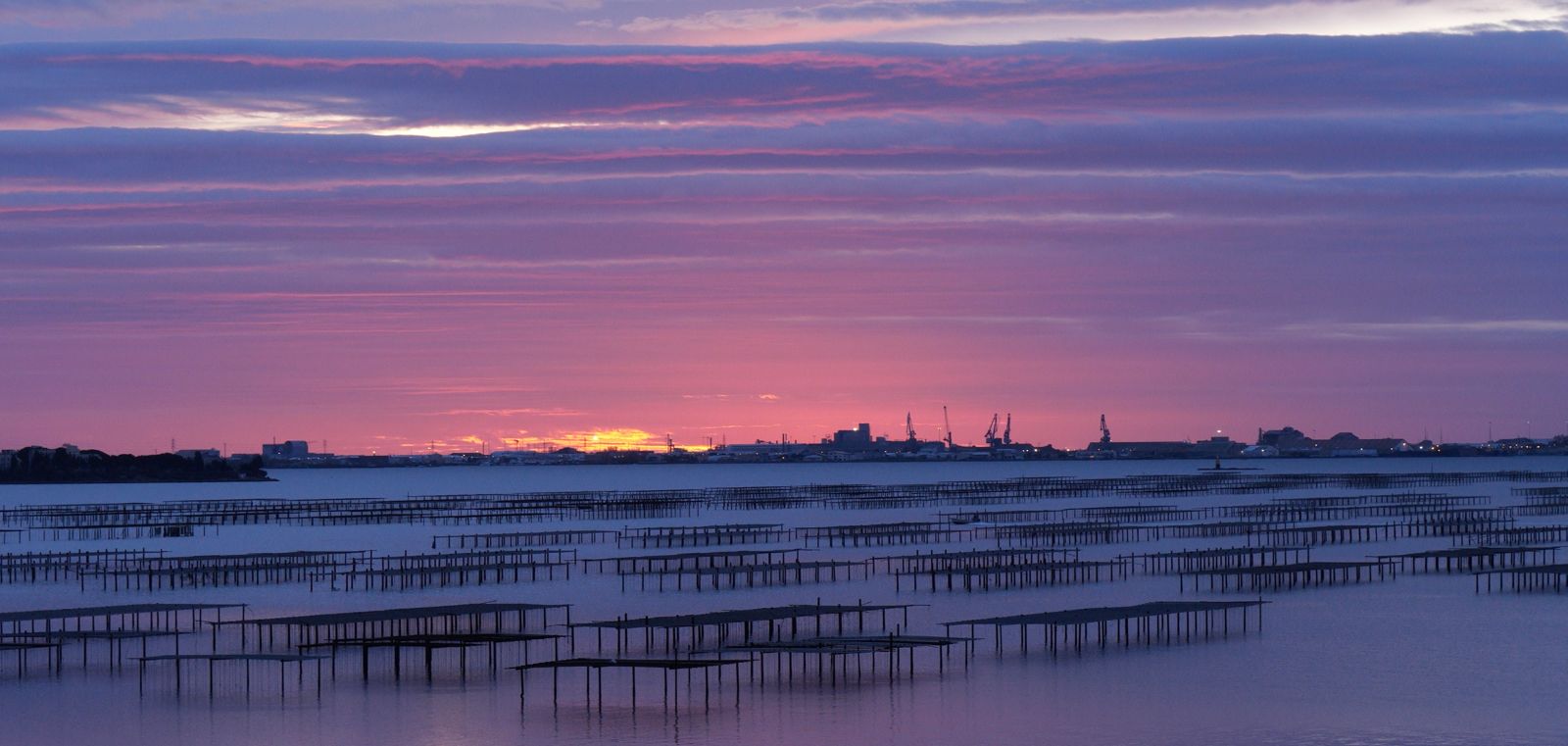A Lagoon Full of Life
Close to the fishing village of Agde, where Blendin will soon open a new holiday park, lies the Etang de Thau. This lagoon is separated from the Mediterranean Sea by a sandbank almost twenty kilometers long, the Lido. It is the largest and deepest lagoon in Languedoc and is known for its rich nature and colorful scenery.
Birds and Marine Treasures
With more than four hundred plant species, the Etang de Thau is a haven for marine life such as seahorses and sea urchins. Divers explore its waters, while walkers can spot flamingos, kingfishers and herons.
Oyster Farming Traditions
Between Bouzigues, Mèze and Marseillan, oyster beds stretch as far as the eye can see. Oyster farming has been a livelihood here for centuries, often in family hands passed down through generations. Because the lagoon has no tides, farmers developed a method called hanging cultivation. Small oysters are attached to lines hanging in the water, and the racks are moved up and down to imitate tides. This gives the oysters oxygen and nutrients. The result is a unique flavor, fresh with a touch of iodine and a hazelnut aroma. The Bouzigues oyster is the pride of the lagoon and appears on menus across the region.
Culture and Culinary Heritage
Visiting an oyster farm is worthwhile. Even if oysters are not your favorite, listening to the passion of the farmers is inspiring. For them, oysters are more than food, they are part of culture and tradition.
The “R” Months Rule
In France, oysters are often eaten in the months with an “R” in the name, a habit dating back to the eighteenth century. King Louis XV preferred it that way to prevent spoilage in summer and because oysters then taste different while reproducing. He declared eight suitable months for eating oysters, which became linked to the word huitres, the French word for oysters and close to the number eight.
Salt of the Camargue
Not far from Agde, the medieval town of Aigues-Mortes overlooks the pink salt fields of Salin du Midi. These flats are part of the Camargue, a protected natural area of 145,000 hectares. This is where the famous Fleur de Sel is harvested. The pink glow comes from a special algae that survives in very salty water. In summer, salt workers harvest the delicate crystals by hand. Fleur de Sel retains some moisture and does not dissolve right away, keeping flavors pure while adding a gentle crunch. It is a favorite of top chefs.
A Gift from Nature
Oysters from the Etang de Thau and Fleur de Sel from the Camargue are both gifts of nature. They are deeply tied to their surroundings and traditions, and best enjoyed where they are grown.




